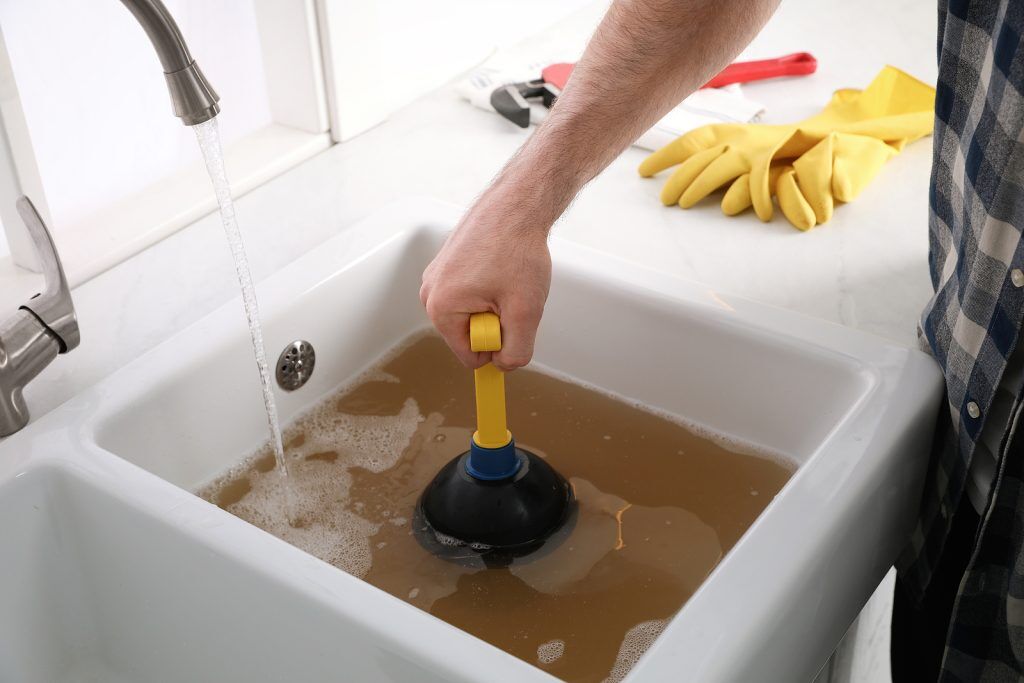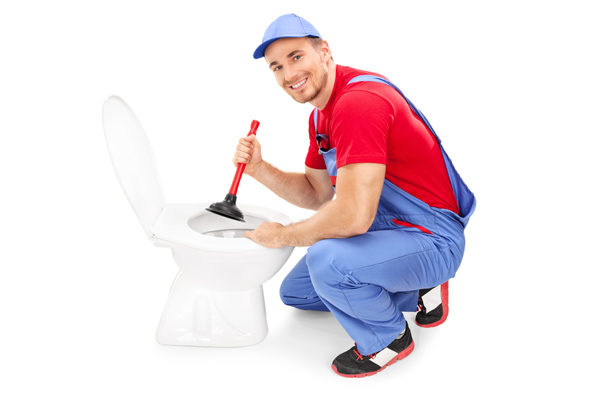Efficient Plunger and Drain Cleaner Use: Key Tips
Efficient Plunger and Drain Cleaner Use: Key Tips
Blog Article
What're your opinions on How To Use Your Toilet Plunger Correctly in 5 Easy Steps?

Introduction
Correct maintenance of household drains pipes is crucial for protecting against clogs and making certain smooth water flow. Among the trick devices in every homeowner's toolkit is the bettor, along with numerous drainpipe cleansers designed to take on persistent obstructions effectively. This article discovers exactly how to utilize plungers and drain cleansers successfully to maintain your drains flowing openly.
Section 1: Understanding Plungers
Sorts of Plungers
There are a number of types of plungers available, each designed for various types of drains and clogs. The most usual kinds include mug plungers, flange plungers, and accordion plungers.
Just How Plungers Work
Bettors deal with the concept of producing stress and suction to dislodge blockages. When effectively applied over a drainpipe, they create a vacuum that can take out particles or break up clogs.
Picking the Right Plunger
Choosing the appropriate bettor depends on the kind of drain and the nature of the blockage. Mug bettors are excellent for sinks and tubs, while flange plungers are better suited for toilets due to their layout.
Typical Mistakes with Plungers
Staying clear of these errors makes certain efficient plunging: incorrect seal around the drain, inadequate force, and unclear bordering particles.
Section 2: Making Use Of Plungers Efficiently
Prep work
Before diving, make certain the bettor covers the drainpipe entirely and creates a limited seal. Clear any noticeable particles around the drainpipe opening.
Method
Start with mild plunging motions to construct suction. Boost pressure gradually, using a stable rhythm. Repeat as required till the drainpipe removes.
Troubleshooting Tips
If diving doesn't work, attempt readjusting the seal, using oil jelly for a better seal, or utilizing a various kind of bettor.
Section 3: Understanding Drain Cleaning Company
Types of Drain Cleaning Company
Drain cleansers can be chemical or chemical. Chemical cleaners utilize solid chemicals to liquify obstructions, while enzymatic cleaners utilize all-natural enzymes to break down raw material.
How Drain Cleaners Work
Chemical cleansers respond with obstructions to dissolve them, while enzymatic cleaners break down organic products like hair and oil without hurting pipes.
Safety and security Considerations
Constantly use handwear covers and eye protection when making use of chemical drain cleaners. Ensure ample ventilation and follow supplier guidelines meticulously.
Eco-Friendly Alternatives
Take into consideration making use of vinegar and baking soda or enzyme-based cleansers for eco-friendly choices that are more secure for pipelines and the environment.
Section 4: Using Drain Cleaners Effectively
Application Strategies
Pour chemical cleansers straight into the drain opening. Enable them to benefit the recommended time prior to flushing with warm water. Chemical cleansers must sit over night.
Preventative measures
Prevent blending different kinds of cleaners, as this can create poisonous fumes. Never ever use chemical cleaners combined with a bettor, as spilling can happen.
Managing Stubborn Clogs
For persistent clogs, consider using a pipes snake or calling a professional plumber to stop damage to pipes.
Verdict
In conclusion, recognizing exactly how to make use of plungers and drainpipe cleansers successfully is important for keeping healthy plumbing systems. By selecting the right devices and strategies, property owners can take on minor obstructions and stop significant pipes issues down the line.
How to Use a Plunger to Unclog a Drain
The humble plunger is a simple yet effective tool for breaking clogs in sinks, tubs and toilets. This handy tool is easy to use. You can make the most of its power if you understand how it works. Ready to dive in? Here’s what you need to know.
Safety First!
Never use a plunger with drain chemicals. Water will splash as you work, and the chemicals can spatter, burning skin and eyes. It’s a good idea to use rubber gloves and wear safety goggles when you work on a clog.
Choose the Right Tool for the Job
Plungers come in two different styles. Sinks, bathtubs and showers require a cup plunger. Like its name suggests, the rubber end is shaped like a cup. Use a flange plunger on toilets. These plungers have a rubber funnel extending from the cup. A plunger needs to be big enough to cover the drain.
Ready, Set, Plunge!
Coat the rim: Coat the plunger rim with petroleum jelly. This helps make a better seal.
Block outlets: Hold a wet rag over nearby outlets such as the overflow vent or the drain in a second sink.
Release air: Insert the plunger at an angle into the water. Water will displace air in the cup. A water-filled cup is more forceful than one filled with air.
Keep the plunger upright: Hold the plunger perpendicular to the drain. Use fast, forceful strokes, but make the first stroke gentle. The first stroke can create a splash if the cup still contains air. Thrust the plunger 15 to 20 times.
Snap off the plunger: The final stroke should be a strong upward motion that ends when the plunger snaps off the drain.
Repeat the process: you may need to repeat this sequence several times. When the water drains away, your work is done. High-five! https://plumbernw.com/blog/how-to-use-a-plunger-to-unclog-a-drain/

Application Strategies
Pour chemical cleansers straight into the drain opening. Enable them to benefit the recommended time prior to flushing with warm water. Chemical cleansers must sit over night.
Preventative measures
Prevent blending different kinds of cleaners, as this can create poisonous fumes. Never ever use chemical cleaners combined with a bettor, as spilling can happen.
Managing Stubborn Clogs
For persistent clogs, consider using a pipes snake or calling a professional plumber to stop damage to pipes.
Verdict
In conclusion, recognizing exactly how to make use of plungers and drainpipe cleansers successfully is important for keeping healthy plumbing systems. By selecting the right devices and strategies, property owners can take on minor obstructions and stop significant pipes issues down the line.
How to Use a Plunger to Unclog a Drain
The humble plunger is a simple yet effective tool for breaking clogs in sinks, tubs and toilets. This handy tool is easy to use. You can make the most of its power if you understand how it works. Ready to dive in? Here’s what you need to know.
Safety First!
Never use a plunger with drain chemicals. Water will splash as you work, and the chemicals can spatter, burning skin and eyes. It’s a good idea to use rubber gloves and wear safety goggles when you work on a clog.
Choose the Right Tool for the Job
Plungers come in two different styles. Sinks, bathtubs and showers require a cup plunger. Like its name suggests, the rubber end is shaped like a cup. Use a flange plunger on toilets. These plungers have a rubber funnel extending from the cup. A plunger needs to be big enough to cover the drain.
Ready, Set, Plunge!
Coat the rim: Coat the plunger rim with petroleum jelly. This helps make a better seal. Block outlets: Hold a wet rag over nearby outlets such as the overflow vent or the drain in a second sink. Release air: Insert the plunger at an angle into the water. Water will displace air in the cup. A water-filled cup is more forceful than one filled with air. Keep the plunger upright: Hold the plunger perpendicular to the drain. Use fast, forceful strokes, but make the first stroke gentle. The first stroke can create a splash if the cup still contains air. Thrust the plunger 15 to 20 times. Snap off the plunger: The final stroke should be a strong upward motion that ends when the plunger snaps off the drain. Repeat the process: you may need to repeat this sequence several times. When the water drains away, your work is done. High-five! https://plumbernw.com/blog/how-to-use-a-plunger-to-unclog-a-drain/

I am very intrigued by How to Use a Plunger to Unclog a Toilet or Drain and I really hope you appreciated the blog entry. Sharing is caring. You never know, you may be doing someone a favor. Bless you for your time. Kindly come by our site back soon.
Customer Reviews Report this page